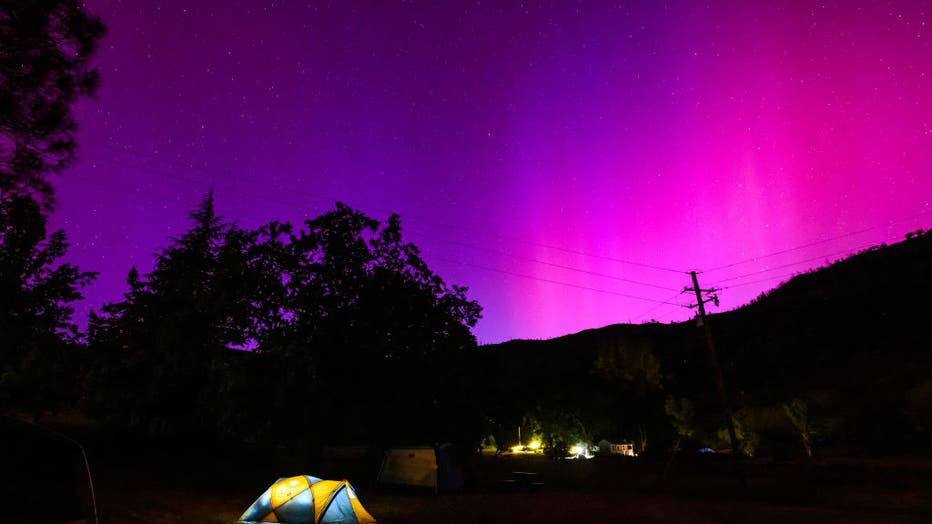More northern lights could come as sun hits solar maximum, NASA says
Stargazers get ready! We could see an explosion of northern lights over the next year or so.
According to NASA, the sun is about to reach solar maximum, an active part of its cycle as it transitions between low and high activity.
NASA said roughly every 11 years, at the height of the cycle, the sun's magnetic poles flip and the sun transitions from sluggish to active and stormy.
RELATED: See the most terrifying displays in our galaxy from NASA
During the solar maximum, the sun will emit "explosions of light, energy, and solar radiation," according to NASA.
The space weather could impact satellites and astronauts in space, as well as communications systems, like radio and GPS, and power grids on Earth.
According to USA Today, this maximum period has already started, explaining why the northern lights have been seen this year in the lower 48 states. The outlet reported the maximum period could last another two years.
What are the northern lights?
The sun sends more than heat and light to Earth — it sends energy and charged particles known as the solar wind. But sometimes that solar wind becomes a storm. The sun’s outer atmosphere occasionally "burps" out huge bursts of energy called coronal mass ejections. They produce solar storms, also known as geomagnetic storms, according to NOAA.

Northern lights or aurora borealis illuminate the night sky over a camper's tent north of San Francisco in Middletown, California on May 11, 2024. (Photo by JOSH EDELSON / AFP) (Photo by JOSH EDELSON/AFP via Getty Images)
The Earth’s magnetic field shields us from much of it, but particles can travel down the magnetic field lines along the north and south poles and into Earth’s atmosphere.
RELATED: Watch magical moment man proposes under dreamy purple aurora
When the particles interact with the gases in our atmosphere, they can produce light — blue and purple from nitrogen, green and red from oxygen.
Instances of northern lights
In May, the sun shot out its biggest flare in almost two decades. That came days after severe solar storms pummeled Earth and triggered auroras in unaccustomed places across the Northern Hemisphere.
How can you best see the northern lights?
NOAA advises those who hope to see the northern lights to get away from city lights.
The best viewing time is usually within an hour or two before or after midnight, and the agency says the best occasions are around the spring and fall equinoxes due to the way the solar wind interacts with Earth’s magnetic field.

